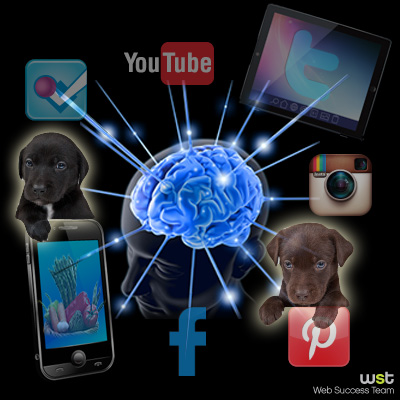21
Aug 2012
The Internet and New Technologies: How Do They Affect Your Psyche?
By Janette Leon-Speyer & Alison Brown, Web Success Team
Like the universe, the Internet is the hub of rapid expansion and constant change. It’s hard to remember a time that existed without iPhones, Facebook, Twitter, Google and email. Being instantly connected to everyone you know is a relatively new phenomenon, but how good can this be for our mental wellbeing. The effects that these sorts of situations have on the human psyche have yet to be fully explored. What we do know is that there are effects, but the extent of its influence has yet to show its true colors.
From A Psychological Standpoint
If someone defriends you, do you take it personally? What if your YouTube video goes viral and you become an instant celebrity overnight? While these are situations that take place in the virtual world, it can be hard to separate the feelings you get as a result of these actions in the real world. One example of online stardom at its worst is the case of Jason Russell and his Kony 2012 video that received 70 million views in less than a week. Once you reach that level of exposure, you become subject to social scrutiny on all fronts, something that not everyone is fully prepared for. Russell suffered a nervous breakdown in public and doctors have referred to it as a state of “reactive psychosis” brought on by the stress of the campaign’s overnight success.
Susceptibility to Technology Addiction
The aspect of technology addiction is also an alarming reality. People are developing unhealthy dependences on the Internet and technologies such as the iPhone. In 2010 two psychiatrists in Taiwan reported that they had two patients suffering from “iPhone addition,” and one patient was even submitted to an asylum after his phone usage reached 24 hours a day. The increasing use of social media is also an area of concern as teenagers are becoming increasingly dependent on platforms such as Facebook to communicate with friends instead of using the phone or initiating face-to-face contact.
On a Happy Note
While the Internet and new technologies do point to an overwhelming trend of negative societal outcomes, like any issue, there is always a positive side. If looking at pictures of puppies cheers you up, the Internet is the best place to find them. How about something inspirational? There are a number of daily blogs that aim to inspire and refresh your mind with positive thinking. If you’re looking for something more visually appealing such as photography, create an RSS feed that captures some of your favorite photographer’s work. If you’re feeling down, try cutting out online use entirely. Giving your brain a chance to recharge without any technological influences can really make a difference.
Where Do We Go From Here?
The world is spinning, and technology sometimes makes it seem like it’s spinning faster than ever. While the negative social aspects of rapidly developing technology are becoming more apparent, perhaps it is pointing to something that is taking place on a more fundamental level. As we as a society become more accustomed to communicating online rather than face-to-face, we must make the conscious decision to make sure that the digital world doesn’t take over reality. By ensuring that personal interactions are still a priority and taking time each day to detach from technology, we can ensure that the lines don’t blur any further— but it’s up to us to maintain that balance.
If you liked this article you may also like:













August 22nd, 2012 20:51 /
Some days it’s worrisome. Most days I find it miraculous. Balance is key. That’s not new. But I try to hike a few hours a week to stay grounded in the real world.